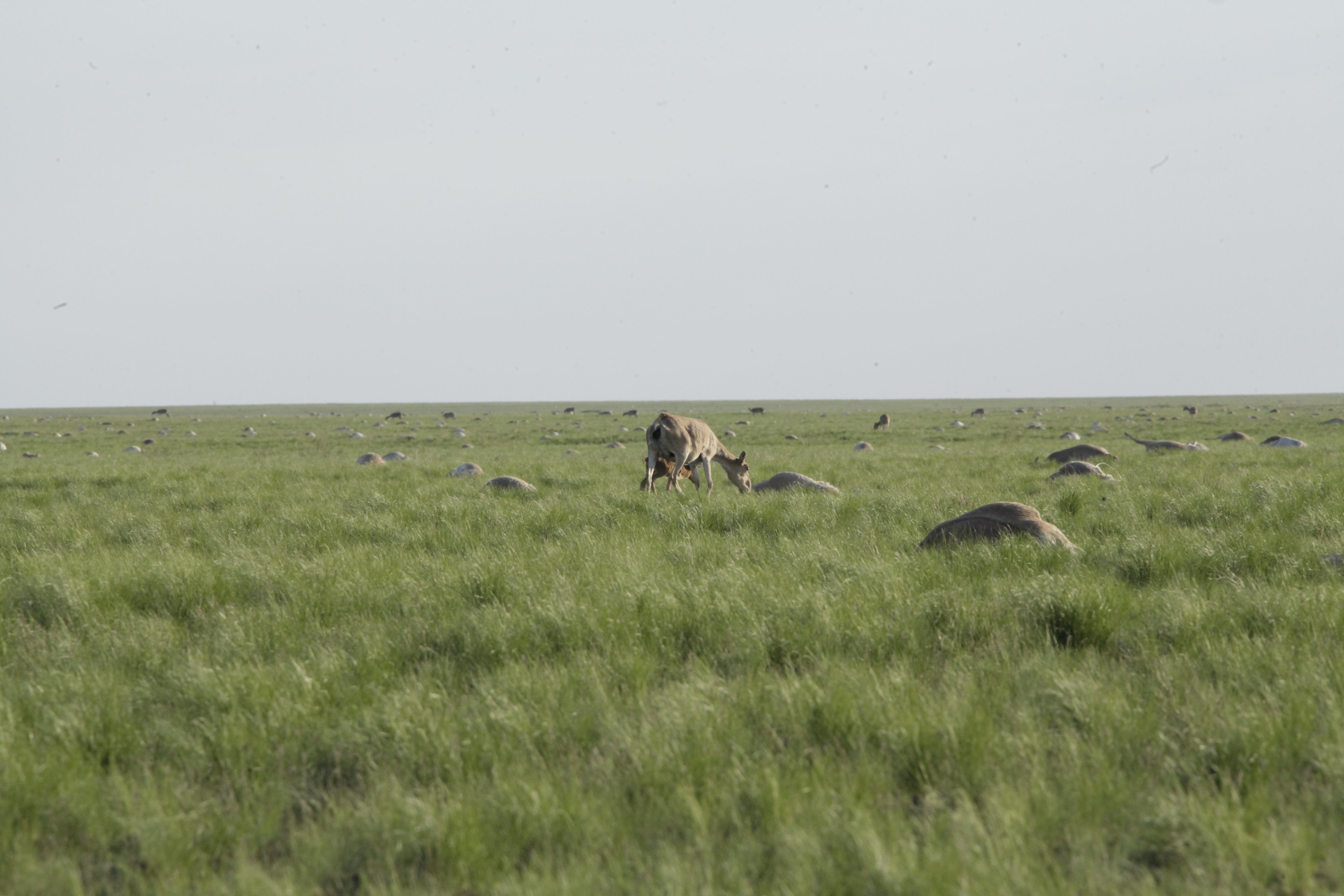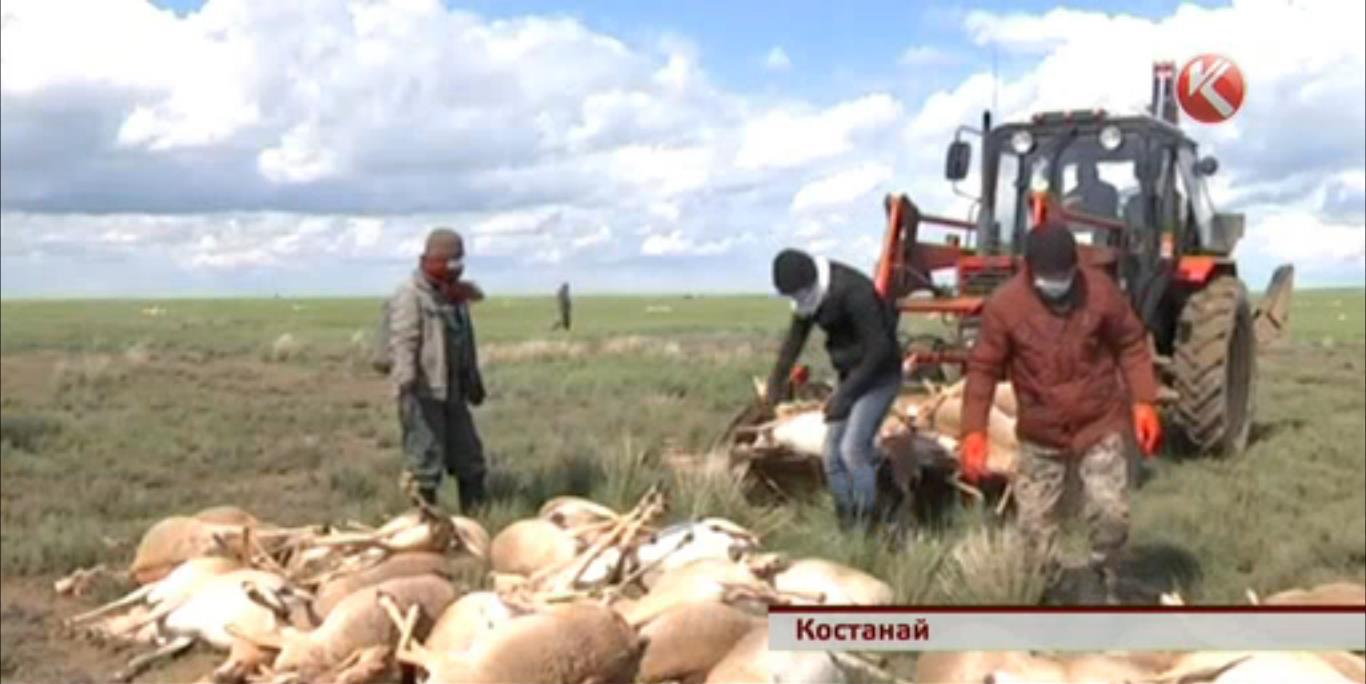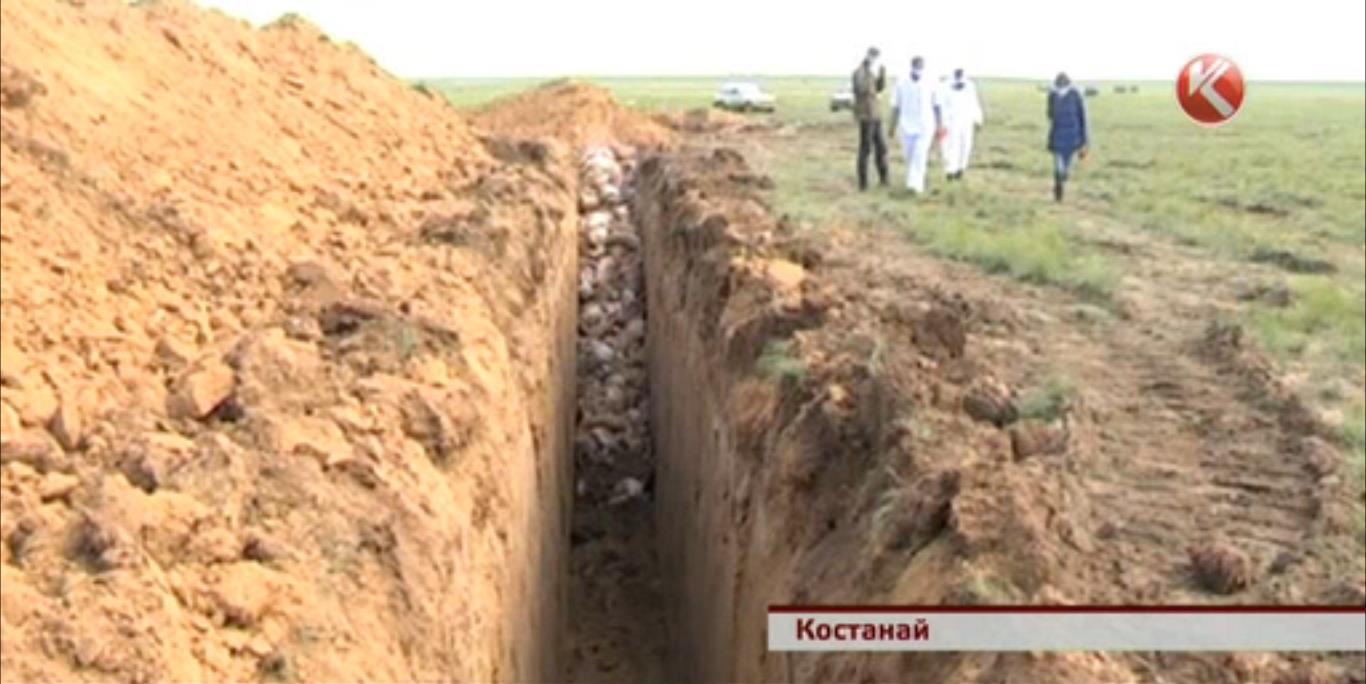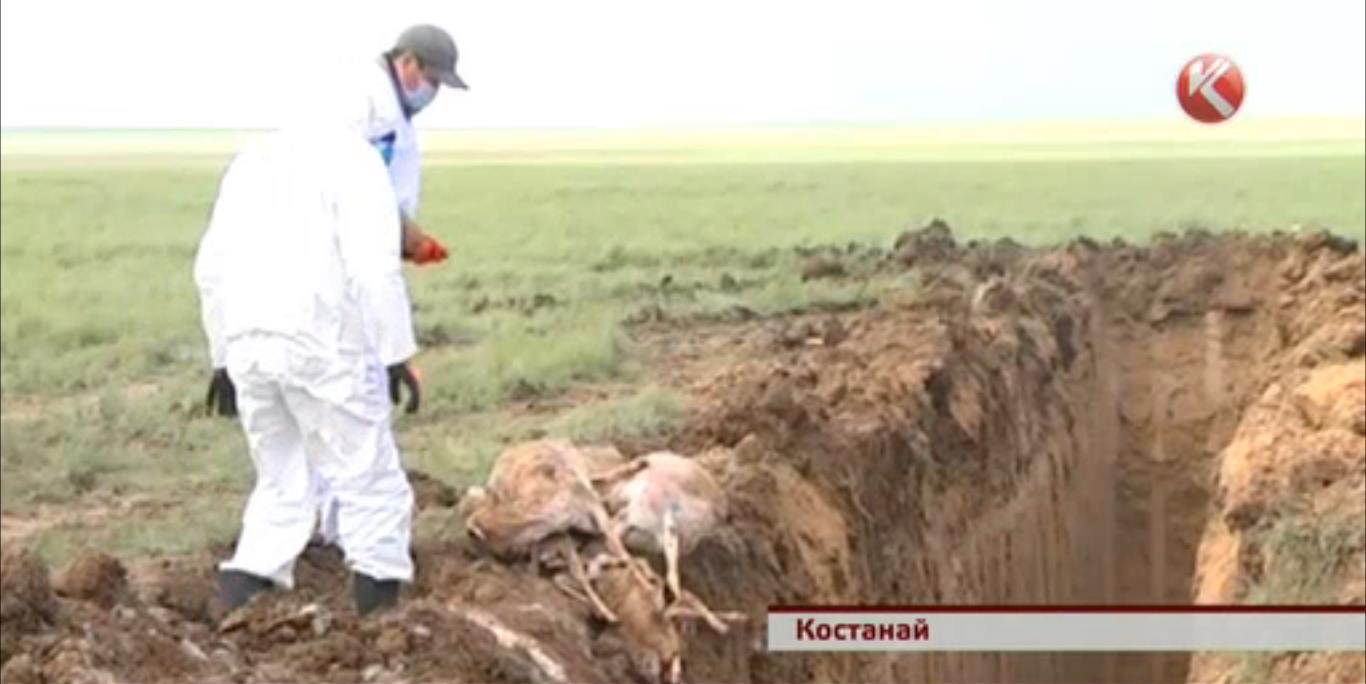The number of rare saiga antelopes found dead in Kazakhstan over the past two weeks has reached 90,000, Tengrinews reports citing the press service of the Ministry of Agriculture of Kazakhstan.
Kostanai Oblast territorial inspection of forestry and wildlife of the Ministry of Agriculture first discovered 117 dead saigas in the area of Zholaba near Amangeldy District of Kostanay Oblast on May 11. There were no signs of poaching.
 Photo courtesy of mgov.kz
Photo courtesy of mgov.kz
The Oblast authorities, the Department for Emergency Situations, environmental prosecutor's office, Department of Internal Affairs and veterinary service were alerted about the incident and started investigating it.
Saiga antelopes are among the species at risk of extinction. It used to inhabit vast areas of the Eurasian steppe zone but are now found only in three areas in Kazakhstan and one in Russia. In the 1920s their population drastically reduced due to long severer winters and famine that drove people to hunt saiga for meat. Then, the Soviet government introduced a ban on hunting the animals and the population has restored by the 1950s and later reached a commercial level. Since the mid-50s, commercial hunting for meat and skins was allowed.
.jpg)
With the collapse of the Soviet Union and severe economic conditions, poaching was rampant, mostly to sell the horns to China. In the beginning of the 1990s, there were about 700,000-900,000 saigas in Kazakhstan, but by the beginning of the 2000s, only about 20,000 remained. Then, the government of independent Kazakhstan decided to do something about it.
In an interview to Tengrinews, researcher at the Institute of Zoology of Kazakhstan Yuri Grachev said that the saiga was Kazakhstan’s national heritage and pride.
"After all, the largest proportion of its population lives here. It is a migratory species. In spring they go north, while in winter they migrate to the south, to Uzbekistan, Turkmenistan, Russia (Volgograd and Astrakhan Oblasts). All of these are Kazakhstan’s population. Therefore, it is almost a purely Kazakhstani species," he said.
According to him, there is a ban on hunting these animals until 2020. He said that in 2012 the total population of saiga in Kazakhstan (the total of three regions: the desert Betpak-Dala in Karaganda Oblast, the Ustyurt plateau between Mangyshlak and the Gulf Garabogazkol in the west, the Aral Sea and the Amu Darya delta in the east; and near Uralsk in West Kazakhstan region) amounted to 137,500 thousand; in 2013 – to 187,000, and in 2014 - to about 256,000.
"The current statistics is encouraging. But it all depends on protection. Poaching is still a threat, and it must be suppressed. But if this growth trend continues, there is hope that we will achieve the population that the had here before," he said.
 Photo courtesy of argumentyrk.ru
Photo courtesy of argumentyrk.ru
The last case of mass death of saiga in the region was recorded in May 2012. Then the cause of death of 926 sagas was determined as pasteurellosis - an acute infectious zoonotic disease. Experts found some similarities between the present case and the one that occurred three years ago -animals become susceptible to infections after long severe winters.
Some experts also thought that the deaths could be caused by exhaustion of the animals case by lack of fodder. 2014 was dry, so there was no sufficient amount of grass in the region.
On May 13 it was reported that the number of dead saiga antelopes in Kostanai Oblast of Kazakhstan had exceeded 1,000 animals. zoologists took samples of soil, water and biological material. Samples taken from the dead animals were sent to the state veterinary laboratory.
The number of dead saiga later grew to more than 2,500 and then quickly climbed to 10,000.
 Photo courtesy of mgov.kz
Photo courtesy of mgov.kz
"The zones were the dead saiga antelopes were discovered in Kostanai Oblast were closely monitored and new cases of animal deaths were registered on May 17. According to the latest figures, about 10,000 saigas have died. The zone exceeds 16 thousand hectares (160 sq.km)," the ministry said.
 Photo courtesy of mgov.kz
Photo courtesy of mgov.kz
"Employees of the akimat (local authorities) and territorial departments of the Ministry of Agriculture are involved in the collection and destruction of the carcasses of the dead animals. More than 5,300 dead saigas have been disposed of. The last several days have been rainy and windy. This hampered the works. 458 people and 21 vehicles are involved in the operation to liquidate the aftermath of saiga deaths," the ministry added.
On May 21, the number of dead animals was close to 27,700. Then, on May 22, horrific figures came to light. 80,000 dead saiga antelopes were found in Kostanai Oblast, which is a half of the entire saiga population of the oblast, KTK TV Channel reported.
Rescue services, military and bacteriologists have been working at the scene for almost two weeks. But they cannot do much to save the antelopes – only clear and bury the corpses scattered across the steppe. The cause is still unknown. The preliminary version is that the animals died from some poisonous weed.
 ©ktk.kz
©ktk.kz
Only females and lambs were affected. Their corpses have swollen bellies, and blood in the nose and mouth. The infection spared the stags: during calving period, females get separated from males and produce progeny.
The smell of decomposition is hovering not only over the burial grounds, each of which contains up to 2,500 dead animals, but over the entire area. The commission, which is more than 500 people, works in protective clothing. Residents of nearby villages, who volunteered to help, collect carcasses in respirators, protective masks and gloves. Incessant rains prevent the works, eroding the roads and causing cars to get stuck in the mud.
 ©ktk.kz
©ktk.kz
Saiga population equals 160,000 in Kostanai Oblast. Special services are trying to protect healthy saiga by driving them away from contaminated areas, which total 160 square kilometres. But it is almost impossible. Prosecutors have launched an investigation. Two officials from the Board of Forestry have been fired over the incident.
Following Kostanay Oblast, the massive pestilence of saiga began in two other Oblasts of Kazakhstan - Akmola Oblast and Aktobe Oblast. On May 22, 200 kilometers from Astana, about a thousand dead saigas were discovered. Later, the number climbed to 2,000. As of May 22, about 3100 saiga antelopes died in Aktobe Oblast. However, according to authorities, the deaths in this region have stopped.
On May 22, in connection with the discovery of pasteurellosis in the dead antelopes, veterinary and sanitary restrictions were introduced in Urpek Amangeldy district in Kostanay Oblast.
Meanwhile, the number of dead animals in Kostanai Oblast continues to grow. According to the data presented by the Ministry of Agriculture on May 25, the total number of dead animals reached 90,000 heads! In just 10 days! The die-off not only continues, but is spreading to other parts of the country.
About 82,000 dead corpses were disposed off as of yesterday, May 25.
 ©ktk.kz
©ktk.kz
Diseases often strike antelopes at this time of year when they are weakened by long winters and breeding. But his year's epidemic is unprecedented in its scale. Kazakhstani experts are baffled, finding it hard to explain the tragedy. The Ministry of Agriculture of Kazakhstan officially requested expert help from the Secretariat for the Conservation of Migratory Species of Wild Animals (Bonn Convention) in identifying the causes of the mass death of the antelopes.
On 22 May, international experts arrived in Astana: representative of the Royal Veterinary College Richard Kock (England) and representative of the Frankfurt Zoological Society Steffen Zuther (Germany). FAO representative Sergey Khomenko also came to assist the Kazakhstani specialists.
By Dinara Urazova, editing by Tatyana Kuzmina


